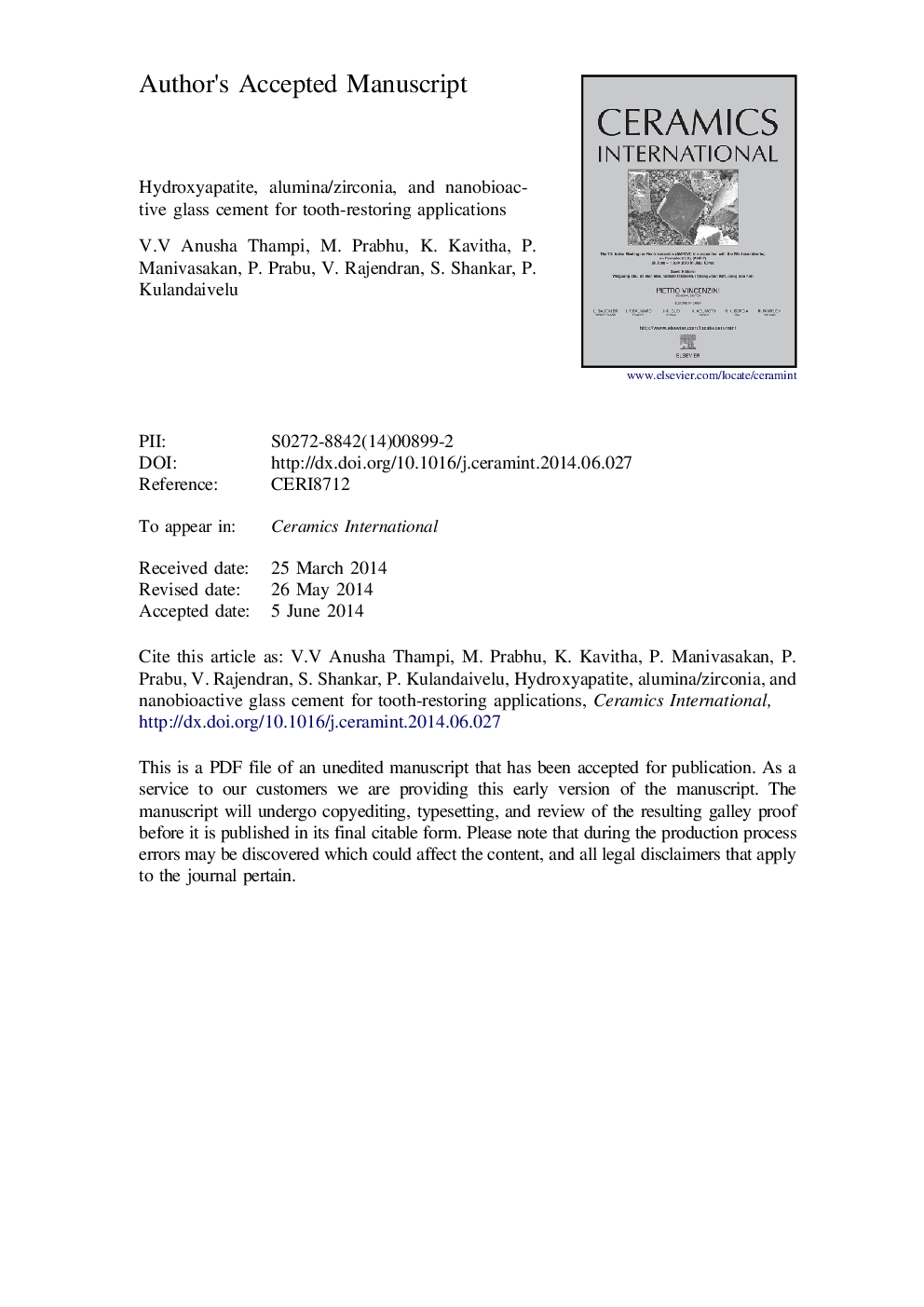| Article ID | Journal | Published Year | Pages | File Type |
|---|---|---|---|---|
| 10625054 | Ceramics International | 2014 | 35 Pages |
Abstract
The aim of this study was to synthesize a new tooth-filling material and to evaluate the in vitro behavior and mechanical properties. New composite cement was prepared and optimized by mixing hydroxyapatite (HAp), alumina/zirconia nanocomposite (HANBG), and nanobioactive glass (NBG). Then, the prepared composite cement was compared with the conventional glass ionomer cement for different parameters such as initial setting time and mechanical properties. The composition of composite cement was determined by X-ray diffraction, Fourier transform infrared spectroscopy, and scanning electron microscope studies. The prepared HANBG composite showed an increase in hardness (1.13 GPa) and Young׳s modulus (22.89 GPa). In vitro bioactivity of the nanocomposite cements was studied using simulated body fluid and better biocompatibility was confirmed with an increase in HAp layer formation. Similarly, the antibacterial activity against Staphylococcus aureus, Lactobacillus, Salmonella typhi, Pseudomonas, Klebsiella, and Bacillus spp. was also studied. From the observed results, it was concluded that HANBG (a new dental nanocomposite prepared by mixing HAp with NBG and alumina/zirconia nanocomposite) samples show improved setting time, bioactivity, and antimicrobial activity. Therefore, HANBG cement can act as a potential candidate for tooth restoration applications.
Related Topics
Physical Sciences and Engineering
Materials Science
Ceramics and Composites
Authors
V.V. Anusha Thampi, M. Prabhu, K. Kavitha, P. Manivasakan, P. Prabu, V. Rajendran, S. Shankar, P. Kulandaivelu,
